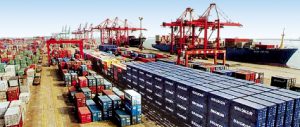The Chicago Climate Exchange (CCX), once hailed as a model of the market-driven approach to solving climate change, has become a casualty of the United States government’s inertia when it comes to dealing with this global problem. The experience of the country’s only voluntary, legally binding carbon market suggests that, rather than filling the void of federal actions, such institutions are destined to rise and fall with the fortunes of mandatory emissions-reduction schemes.
In early July, the parent company of CCX was bought by Atlanta-based IntercontinentalExchange (ICE) for US$622 million (4.2 billion yuan). According to Reuters, the new owner started cutting staff at the CCX within weeks of the purchase. CCX spokesperson Brookly McLaughlin said in August that ICE was closely monitoring the progress of carbon policy in the United States and evaluating whether to continue CCX operations “that would establish a reduction and trading programme extending beyond 2010”.
As it stands now, the CCX is non-operational. There has been no trading at the exchange for months. The price of its carbon financial instruments (CFIs), one unit of which represents 100 tonnes of carbon dioxide equivalent, hovers at a mere US$0.10 (0.68 yuan) each, compared to a historical high of US$7.4 (50.4 yuan) in May and June of 2008. Both buyers and sellers cite the political uncertainty surrounding US climate-change policy as the primary factor that is depressing prices and muting trading activities.
The roughly 400 participants of the CCX include Fortune 500 companies, such as Ford and DuPont, and governments including the state of New Mexico and the city of Portland. These members make a legally binding commitment to reduce their carbon emissions. Those who reduce emissions beyond their targets have surplus allowances to sell or bank. Those who fall short have to buy allowances in the market. Such emissions-trading systems are often dubbed “cap-and-trade”.
For years, conservation groups and environmentally minded politicians have promoted a central government cap-and-trade system as the most cost effective tool for stalling the progress of climate change. They argue that such a trading scheme would harness the power of the free market, spur competition and stimulate innovation. The ideas seemed to be making headway when major emitters, including the utility industry, got behind the concept. American Electric Power (AEP), one of largest power generators in the United States, is a founding member of the CCX. “Investors want to see companies respond in accordance with the direction of public policy,” explained Bruce Braine, AEP’s vice president of strategic policy analysis.
Yet to the dismay of carbon-trading supporters, president Barack Obama has made only token efforts towards making it law. The outlook brightened last year when a cap-and-trade bill gained the approval of the House of Representatives, the lower legislative chamber, only to darken this summer when the Senate, the upper chamber, abandoned efforts to pass any climate-change legislation before Congress went into recess. For the CCX, the latest development may not be “a stake in the heart”, said Henry Henderson, director of the Chicago office of conservation group the Natural Resources Defense Council (NRDC), but “it does hobble it somewhat in terms of delivering the benefits it is capable of delivering.”
For some participants, the benefits of trading in the voluntary market have become so meagre that they are eyeing the exit. “A market only works if you have buyers and sellers. For all purposes, the buyers have left the market,” said David Miller, chief science officer at AgraGate Climate Credits, an Iowa-based company, which is one of the exchange’s “aggregators”. This means the firm collects contracts from farmers who agree to adopt greenhouse-gas absorbing practices, such as converting cropland to grassland, and sell those contracts as carbon offsets. Emitters used to buy these offsets in the hope that they would later be recognised in a government-run, mandatory system. But, said Miller, as political will for federal actions has diminished, demand for offsets has fallen and prices have plunged. “It takes all the money just to do the paperwork – the verifiers, the registration fees. There’s no farmer interested in doing it at that price,” said Miller. His company is considering whether or not to continue operating next year.
Other than profits, a less tangible benefit such a voluntary market provides is a warm up exercise the participants believe will give them a “leg up” if and when the federal government introduces a mandatory structure, according to Henderson. “So it’s how do they get a handle on their emissions, understand their operations better and start doing a series of practices in terms of monitoring, reduction and participation in a verification structure.”
According to the CCX, its members collectively cut carbon emissions by 450 million tonnes since trading started in 2003. By comparison, the US economy put out a total of seven billion tonnes of greenhouse gases in 2008 alone. Henry Henderson pointed out that the CCX’s emissions-reduction feat is “marginal, as far as getting to the level of reductions required to avert an international catastrophe”.
Those associated with the exchange have never advertised it as a replacement for government action, but “as a large-scale demonstration project to explore the workability of carbon trading”, said CCX spokesperson McLaughlin. Moreover, its chairman and chief executive, Richard Sandor, has argued that the voluntary system has paved the way for a mandatory one. In an op-ed published last August in Roll Call, a Washington newspaper devoted to the affairs of Congress, he wrote: “The experience of the CCX has shown that cap-and-trade is not only doable — it is affordable and desirable.”
But some academics and environmentalists remain anxious that, if CCX serves as a prototype for a mandatory government regime, certain dubious practices – namely the trading of offsets – will be perpetuated. “My concern is that these voluntary markets are sending the exact wrong message to Congress,” said Kenneth Richards, associate director of the Center for Research on Energy and the Environment at Indiana University. “They designed an offset protocol that’s easy to use rather than rigorous.”
Under the CCX’s trading system, emitters can pay for carbon-cutting activities, such as burning methane at landfills or maintaining forests, if they fail to meet emissions-reduction targets. By nature, such activities are hard to monitor and verify, said John Riley, professor of energy, environmental and agricultural economics at the Massachusetts Institute of Technology. “If you buy wheat, you know when the wheat is delivered and you can see the wheat. If the wheat turns out not to have the protein content you expected or if there is too much chaff in it, you can observe that. If you buy carbon allowances, all you’ve got is some electronic thing that says you have carbon reductions.”
Although the CCX maintains that it ensures the integrity of offset projects by requiring that sellers of offsets obtain independent verification from a CCX-approved verifier, it has faced repeated criticism in this regard. A Washington Post article in October 2008, for example, reported that a Virginia landfill operator made tens of thousands of dollars from the CCX by selling offsets tied to capturing and burning methane, something the landfill had been doing long before trading started at the CCX. If the report is accurate, the offset practice violates the “additionality” requirement set by the exchange itself, which mandates that savings in greenhouse-gas emissions must be additional to those that would have occurred in business-as-usual scenario.
Despite continued scepticism about its effectiveness, and its uncertain future, the development of CCX has not been in vain, said Henderson of the NRDC: “CCX is useful in terms of outreach to part of the economic community and it has been able to reach out to public officials in ways that say how this is actually a beneficial business play for the world.”
The CCX has also been credited with introducing cap-and-trade to major developing countries. In 2007, it signed up a Brazilian state government as a member and three Indian companies as aggregators. ICE, the new owner, cited CCX’s international reach, especially in “[e]arly-stage growth markets with long-term potential”, as a motivating factor in the acquisition. In 2008, the CCX partnered with China National Petroleum Corporation Assets Management and the Tianjin Property Rights Exchange to launch the Tianjin Climate Exchange (TCX).
The experience in Chicago is guiding the TCX’s design. But unlike the Chicago shop, the Tianjin offshoot seems to have the political wind on its back. The China Daily, a state-owned newspaper, reported that a multi-ministerial meeting led by the National Reform and Development Commission made the decision to launch a pilot carbon-trading system during China’s 12th Five Year Plan, which starts next year.
But Tianjin faces even more daunting a struggle than Chicago to establish the credibility of the market. For one, China doesn’t yet have a system to quantify and register its carbon emissions and the government has refused to allow international verification of its emissions-cutting practices. The China Daily story also reported that Chinese officials plan to keep the pilot carbon market voluntary at least initially and that they are still debating whether to set caps on emissions. If the fate of the CCX serves as an indicator, the Chinese will soon learn that a voluntary market will hit its limits in the absence of government-mandated goals on emissions reduction.
Xie Yanmei is a freelance reporter based in Washington, DC.
Homepage image from the carbon catablog


